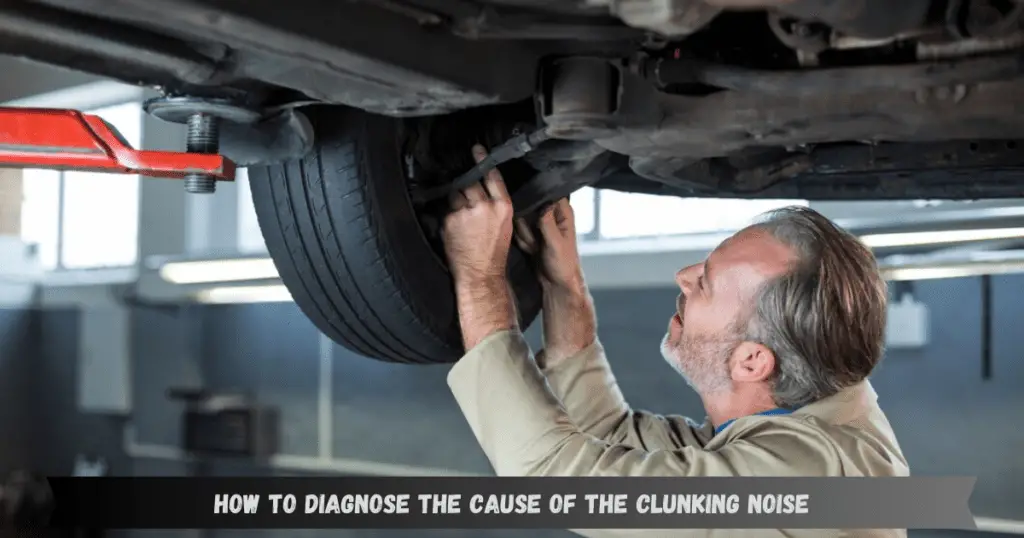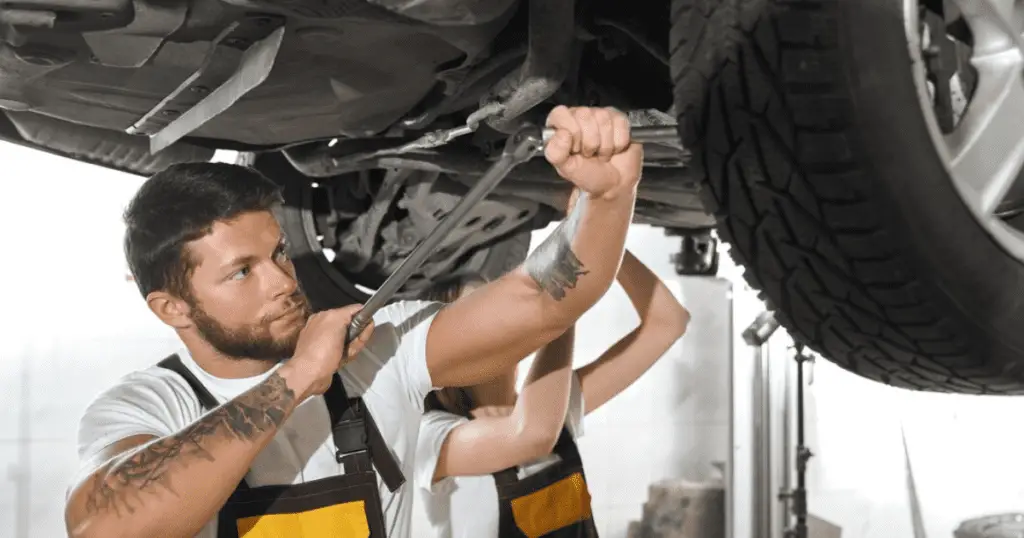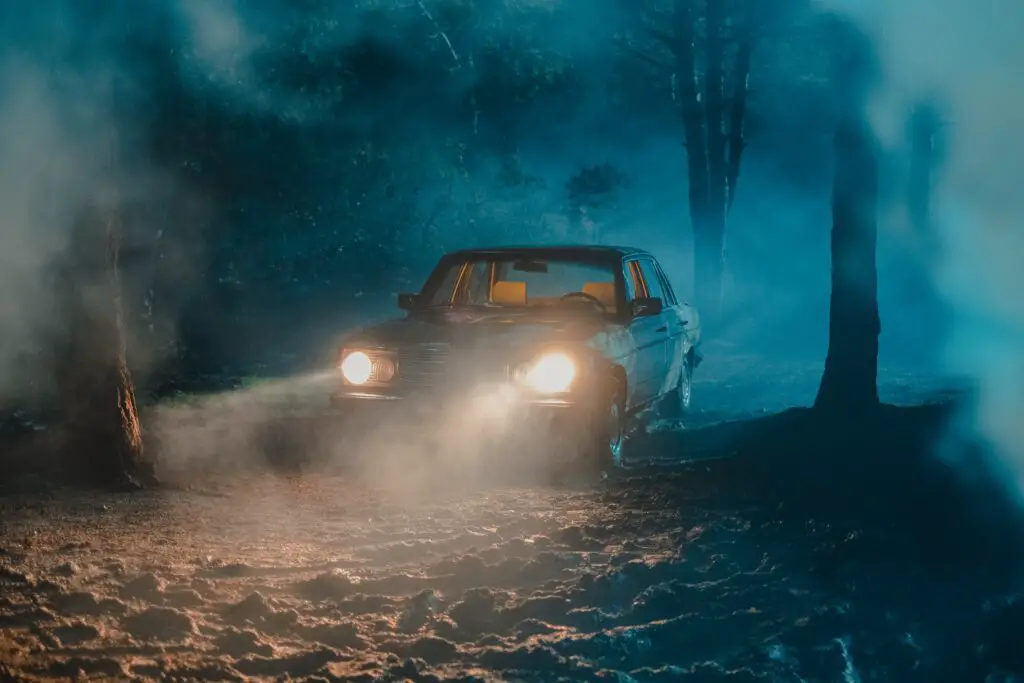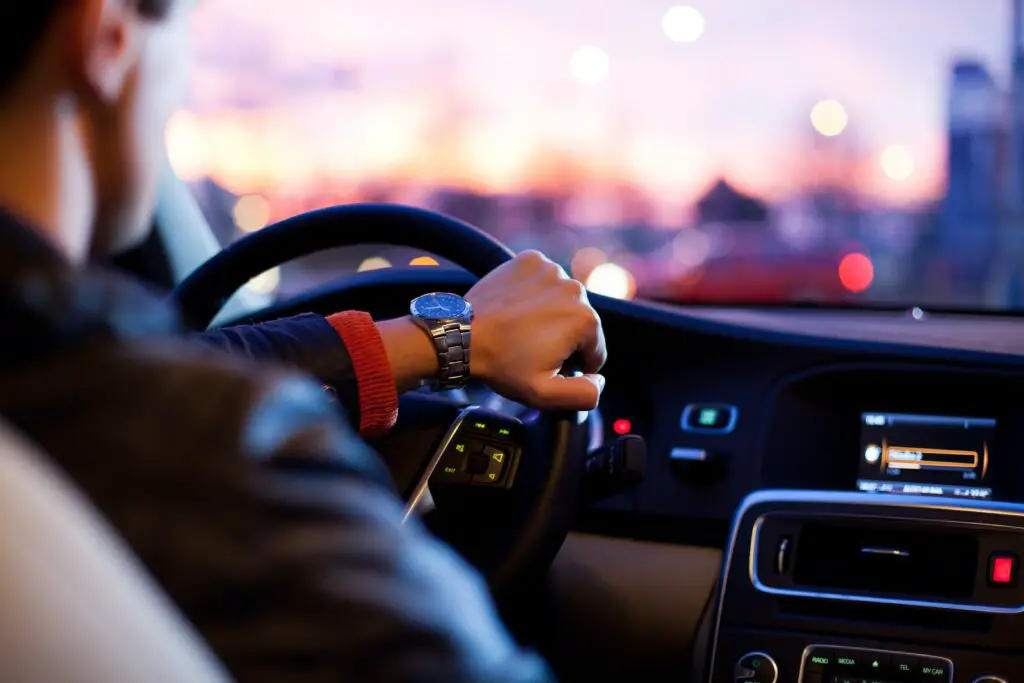A clunking or knocking noise coming from the rear of your car when going over bumps can be annoying and a little unnerving. However, in most cases, it’s caused by a minor issue that can be fixed with some basic mechanical skills.
What Causes the Clunking Noise?
There are several potential culprits for Rear End Clunking Noise When Going Over Bumps:
Worn Suspension Components
The most common cause is worn-out suspension bushings, ball joints, struts, or shock absorbers. As these components age, the rubber bushings and seals deteriorate, causing looseness and excessive play. This allows metal parts to knock together when going over bumps.
Specific suspension components that can cause clunking include:
- Control arm bushings – Connect the control arms to the frame. Worn bushings allow the control arm to shift and knock around.
- Ball joints – Allow the control arms or steering knuckles to pivot. Bad ball joints clunk over bumps due to looseness.
- Strut mounts and bearings – Attach the struts or shocks to the frame. Worn mounts can allow the strut to shift and knock.
- Shock absorber bushings – Isolate the shock body from the mounts. Deteriorated bushings allow the shock body to knock around.
- Sway bar links – Connect the sway bar to the control arms or struts. Worn links clunk over bumps due to looseness.
Loose Suspension Components
Even if the bushings and joints are in good shape, loose suspension hardware can cause rear end clunking Noise When Going Over Bumps:
- Loose strut mount nuts
- Loose sway bar link nuts
- Loose control arm nuts
- Loose shock absorber bolts
Vibration and road impacts can cause these nuts and bolts to gradually loosen over time if not properly torqued and secured.
Drivetrain Issues
In rear-wheel drive vehicles, worn drivetrain mounts can also cause clunking from the rear when hitting bumps:
- Worn transmission mount bushings
- Worn differential mounts
As the engine and transmission shift under acceleration and braking, worn mounts allow the drivetrain to knock around.
Exhaust Issues
The exhaust system is also suspended underneath the car with rubber hangers and mounts. Broken or deteriorated hangers can allow the exhaust pipes to knock around when hitting bumps.
Loose Items in Trunk
Sometimes the clunking noise is caused not by the car itself, but by loose items bouncing around in the trunk! So check for any tools, spare tires, cargo, etc. that may have come loose.
How to Diagnose the Cause of the Clunking Noise
Figuring out exactly what’s causing the Rear End Clunking Noise When Going Over Bumps often takes some hands-on investigation:

Inspect Suspension Components
Get the car up on jack stands so you can inspect the underside. Check for any obvious looseness or play in the control arm joints, ball joints, sway bar links, and strut mounts by trying to wiggle them. Examine for cracked or deteriorated rubber bushings.
Check Mounting Hardware
Go around and check that all suspension hardware, including control arm bolts, strut mount nuts, and sway bar link nuts are torqued down properly. Tighten any that are loose.
Monitor Noise Over Bumps
Take the car for a test drive and listen carefully, trying to pinpoint exactly where the clunking is coming from and when it occurs. Rear suspension noises will be most noticeable when hitting bumps or dips that compress the suspension.
Isolate Noise with Mechanic’s Stethoscope
Use a mechanic’s stethoscope to isolate the source of the noise. Place the sensor end on different rear suspension components while having an assistant bounce the rear of the car up and down.
Inspect Drivetrain Mounts
Check all drivetrain mounts including transmission, differential, and engine mounts for deterioration or looseness that could cause knocking.
Check Exhaust Hangers
Inspect the exhaust hangers and mounts to see if any are broken or loose allowing exhaust movement.
Rule Out Loose Cargo
Finally, make sure no tools or spare tires are bouncing around in the cargo area that could cause the clunking.
How to Fix a Clunking Rear Suspension
Once you’ve diagnosed the specific cause of the rear end Clunking Noise When Going Over Bumps, repairs involve replacing any worn components and tightening hardware:

Replace Worn Suspension Joints
If ball joints, sway bar links, or bushings are worn, they will need to be replaced. Use a ball joint separator tool to separate the ball joint from the steering knuckle or control arm. A press may be required to remove and install new control arm bushings.
Replace Struts/Shocks
If the strut mounts and bushings are worn, you may need to replace the entire strut or shock absorber assembly. Replacement struts come pre-assembled for easy installation.
Torque All Hardware
Go over all mounting hardware including control arm bolts, strut nuts, and sway bar link nuts to confirm proper torque. Use a torque wrench to tighten hardware to the vehicle manufacturer’s specs.
Replace Exhaust Hangers
Replace any broken or deteriorated exhaust hangers to quiet down exhaust knocking noises. Use some penetrating oil if the rubber exhaust isolators are stuck on the hanger rods.
Secure Loose Cargo
Make sure all cargo, tools, and spare tires are properly secured so they don’t bounce around.
Replacing worn suspension components and tightening loose hardware will typically cure any clunking noises coming from the rear suspension. It’s a relatively affordable fix that you may be able to DIY depending on your mechanical skill level. If you need help diagnosing or repairing the problem, any professional mechanic can inspect the suspension and perform the necessary repairs.
Driving around with a noisy, clunking rear suspension isn’t just annoying, it also puts added stress on components. So get any persistent rear end clunking or knocking noises checked out and repaired soon for a smoother, quieter ride.
FAQs About Rear End Clunking Noise When Going Over Bumps
Why does my rear end clunk when I hit a bump?
The most common cause of rear end clunking Noise When Going Over Bumps is worn suspension components like ball joints, bushings, struts, or shocks. This allows excess movement and looseness which creates a knocking or clunking noise.
What can cause a clunking sound in the rear end?
- Worn suspension joints – ball joints, bushings, strut mounts
- Loose suspension hardware – bolts, nuts
- Bad shocks or struts
- Worn drivetrain mounts – transmission, differential
- Broken exhaust hangers
- Loose spare tires or tools in the cargo area
What causes a clunking noise when going over bumps?
Clunking noises specifically when going over bumps are usually due to worn suspension components. The impact and weight transfer of hitting a bump or dip puts extra stress on ball joints, bushings, struts, and shocks, causing worn components to clunk together.
Can rear shocks make a clunking noise?
Yes, worn rear shocks can cause a clunking or knocking noise going over bumps. If the shock bushings or bearings are deteriorated, it allows excessive movement of the shock body resulting in a clunking sound. Bad shocks can also clunk over bumps due to looseness or loss of damping.
Do ball joints clunk over bumps?
Ball joints that are worn out or have excessive play can cause loud clunking or knocking noises when going over bumps. Because ball joints pivot as the suspension travels up and down, any looseness will make the joint clunk audibly. Bad ball joints are one of the most common causes of suspension clunks.
Why is my suspension clunking?
The vast majority of suspension clunking noises are caused by worn components that have too much play or looseness. Ball joints, control arm bushings, sway bar links, and strut mounts are common wear items. Make sure to get any clunking inspected and repaired soon, as it puts added stress on other components.
Conclusion – Rear End Clunking Noise When Going Over Bumps
Clunking noises coming from the rear suspension when driving over bumps can be annoying but are usually caused by worn components like ball joints, bushings, struts, or shocks. Broken exhaust hangers or loose cargo can also clunk over bumps. Carefully inspect the suspension, exhaust, and cargo area to diagnose the issue. Replace any worn parts, tighten loose hardware, and secure cargo to cure that annoying clunking once and for all.

